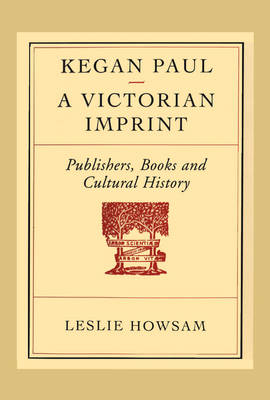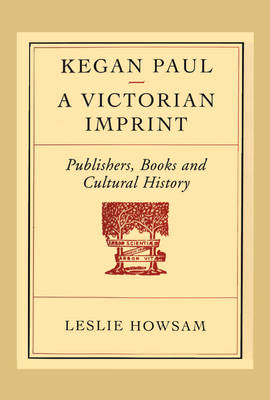
- Retrait gratuit dans votre magasin Club
- 7.000.000 titres dans notre catalogue
- Payer en toute sécurité
- Toujours un magasin près de chez vous
- Retrait gratuit dans votre magasin Club
- 7.000.0000 titres dans notre catalogue
- Payer en toute sécurité
- Toujours un magasin près de chez vous
Description
The Kegan Paul imprint was created and its reputation for a distinguished list of titles established during a forty-year period from 1871 to 1911. Several publishers, and their firms, were involved in the development of the imprint during this period, beginning with Henry S. King and Company, and following in 1877 with Charles Kegan Paul and his partner Alfred Chenevix Trench. A financial crisis in 1889 forced an amalgamation with two other businesses and the new firm changed managers periodically until George Routledge and Son took over the business in 1911.
Leslie Howsam combines biography and analytic bibliography in her study of the Kegan Paul imprint to demonstrate the value of publishing history as a contribution to the scholarly study of the book. Basing her research on intensive work in the company's surviving archives and supplemented by extensive library work with the actual books, Howsam looks at the wide range of significant titles published for the imprint. In addition, she reconstructs a biographical and business history of the firm based on published and unpublished accounts of the individuals involved, including the publishers and their families, and looks at the effects of changing business practices.
The focus of Victorian Imprint - Kegan Paul is the duality of imprint: the publisher's imprint upon a list of books, and publisher's personalities, the imprint of their taste and judgment on the culture in which they lived.
Spécifications
Parties prenantes
- Auteur(s) :
- Editeur:
Contenu
- Nombre de pages :
- 244
- Langue:
- Anglais
- Collection :
Caractéristiques
- EAN:
- 9781442623040
- Date de parution :
- 15-12-99
- Format:
- Livre broché
- Format numérique:
- Trade paperback (VS)
- Dimensions :
- 152 mm x 229 mm
- Poids :
- 367 g

Les avis
Nous publions uniquement les avis qui respectent les conditions requises. Consultez nos conditions pour les avis.






